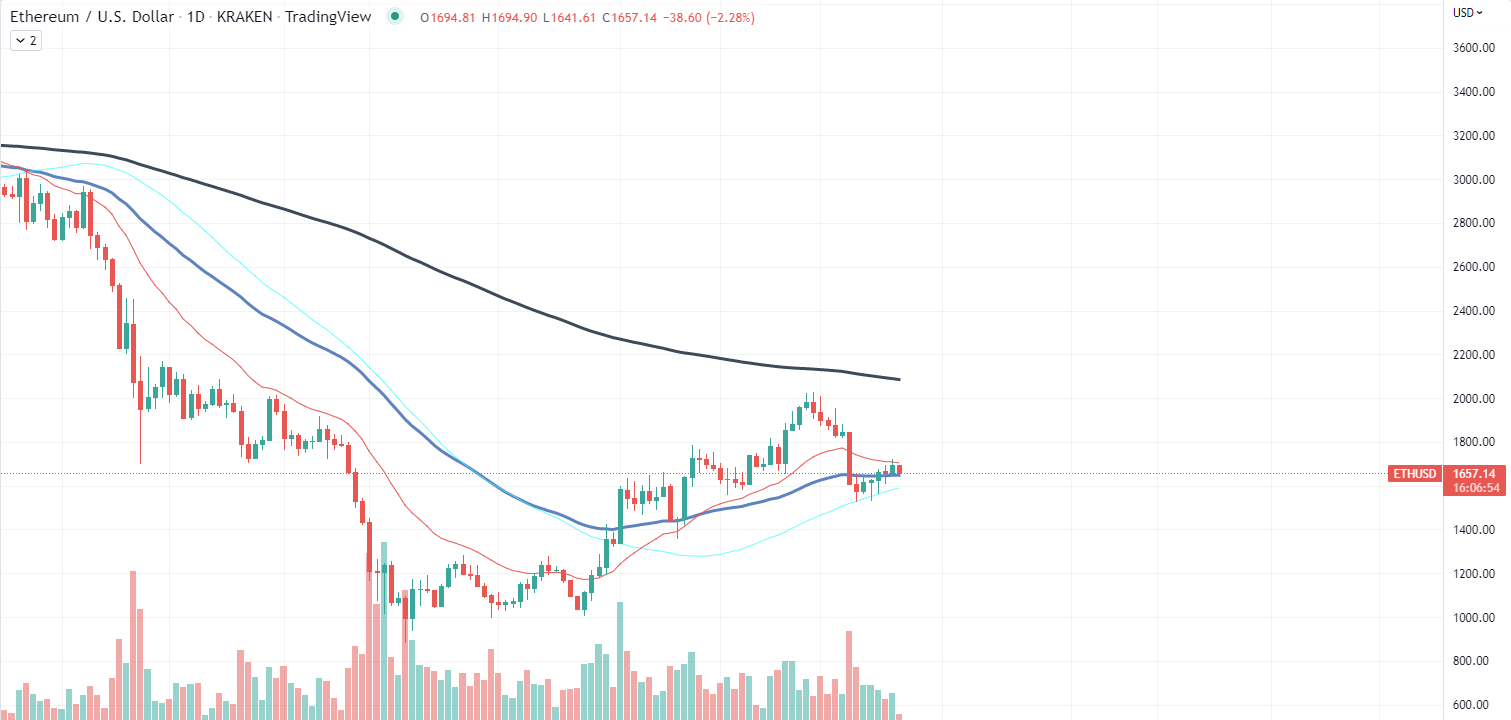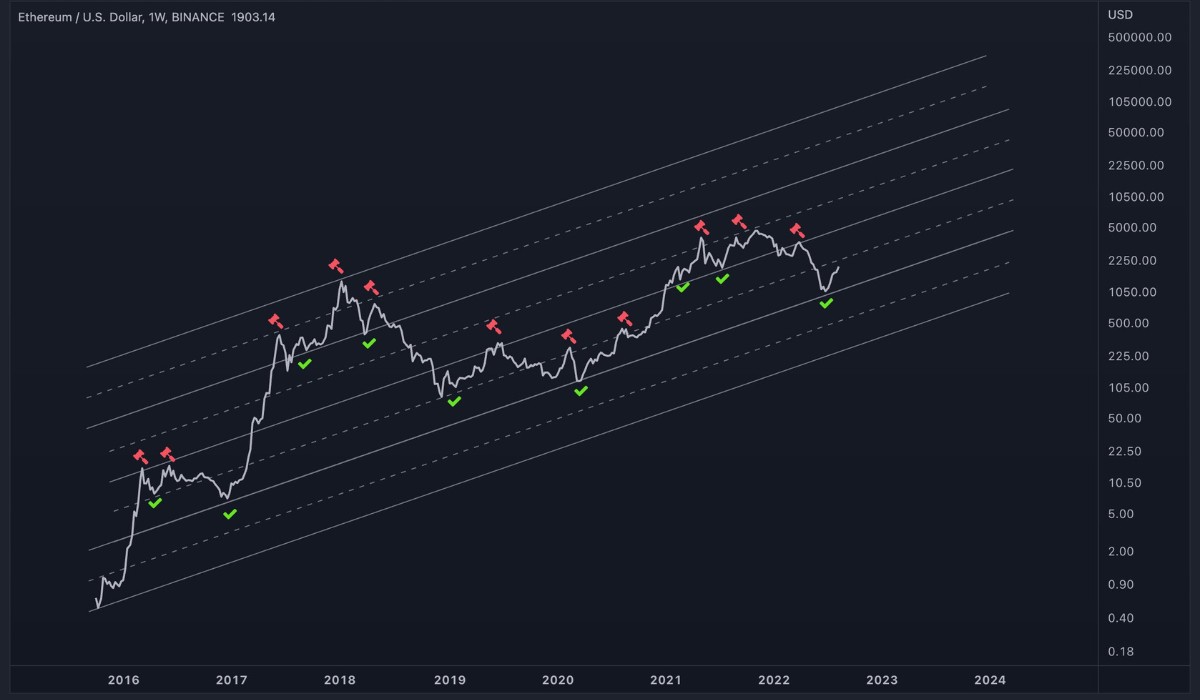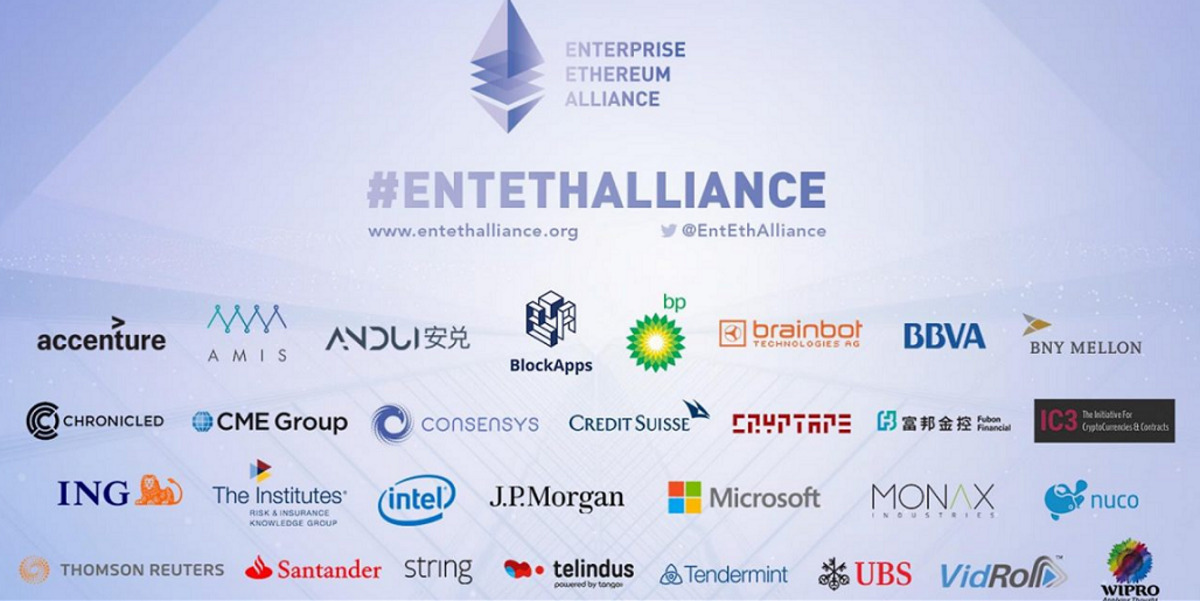Introduction
With the rise of cryptocurrencies, Ethereum has emerged as a leading player in the digital currency market. As the second-largest cryptocurrency by market capitalization, it has attracted the attention of investors and enthusiasts worldwide. While Ethereum offers many advantages, including smart contract capabilities and decentralized applications, one question that often arises is: who owns the most Ethereum?
Knowing the answer to this question is important, as it provides insights into the distribution of Ethereum wealth and the influence that certain entities have on the market. By understanding the ownership landscape of Ethereum, investors can better assess market trends, anticipate changes, and make informed decisions about their own investments.
However, determining the exact ownership of Ethereum can be a complex task. The decentralized nature of the blockchain makes it challenging to track individual ownership with complete certainty. Nevertheless, various factors can give us an idea of the entities with significant Ethereum holdings.
In this article, we will explore the fascinating world of Ethereum ownership. We will delve into the factors that influence Ethereum ownership, identify some of the top Ethereum holders, discuss the impact of institutional investors, and examine how the distribution of Ethereum ownership affects the overall market dynamics. Additionally, we will touch upon the challenges of tracking Ethereum ownership and the potential implications of government regulations.
By the end of this article, you will have a comprehensive understanding of the Ethereum ownership landscape and its significance in the cryptocurrency market. So, let’s dive in and uncover who owns the most Ethereum.
Why is it important to know who owns the most Ethereum?
Understanding who owns the most Ethereum is crucial for several reasons. It provides valuable insights into the distribution of wealth within the Ethereum ecosystem and helps us identify key players who have a significant influence on the market dynamics. Here are some reasons why it is important to know the largest Ethereum holders:
1. Market Influences: The concentration of Ethereum ownership can have a direct impact on the market. When a few individuals or entities hold a significant amount of Ethereum, they have the power to influence prices, market sentiment, and trading volumes. By knowing who owns the most Ethereum, we can better understand the potential market manipulations and anticipate their effects on the overall cryptocurrency ecosystem.
2. Investor Confidence: The ownership distribution of Ethereum can influence investor confidence and trust in the cryptocurrency. If a large portion of Ethereum is held by a few individuals or organizations, it may raise concerns about centralization and potential market manipulation. Conversely, a more evenly distributed ownership can instill confidence in the cryptocurrency, as it reflects a broader base of stakeholders and decentralization.
3. Market Analysis: Studying the ownership patterns of Ethereum can provide valuable insights for market analysis and forecasting. By analyzing the behaviors and strategies of the largest Ethereum holders, we can gain a better understanding of their investment decisions, market trends, and potential market movements. This information can help both individual investors and institutional players make more informed investment decisions.
4. Governance and Decision-making: The Ethereum blockchain operates on a decentralized governance model, where decisions about upgrades, protocol changes, and community initiatives are made collectively. However, the ownership distribution can influence decision-making processes within the Ethereum ecosystem. By knowing the largest Ethereum holders, we can assess their potential influence on governance decisions and the direction of the platform.
5. Risk Assessment: Knowing the largest Ethereum holders enables us to assess potential risks associated with the cryptocurrency. If a significant portion of Ethereum is concentrated in the hands of a few entities, it increases the risk of price manipulation, control, and potential market disruptions. Understanding these risks allows investors to make informed decisions and mitigate potential losses.
In summary, understanding who owns the most Ethereum is important as it provides insights into market influences, investor confidence, market analysis, governance, and risk assessment. By gaining a comprehensive understanding of the Ethereum ownership landscape, investors can make informed decisions and navigate the ever-evolving cryptocurrency market.
Factors that influence Ethereum ownership
Several factors contribute to the distribution of Ethereum ownership. While the blockchain’s decentralized nature ensures transparency, determining exact ownership can be complex. However, certain factors can help us understand the influencers and entities with significant Ethereum holdings. Here are some key factors that influence Ethereum ownership:
1. Early Adopters: Early adopters of Ethereum, especially those who participated in initial coin offerings (ICOs), have the potential to hold substantial amounts of Ethereum. These individuals recognized the potential of the platform before it gained mainstream attention, allowing them to accumulate significant holdings at a lower cost.
2. Mining: Ethereum can be acquired through mining, where participants validate transactions and secure the network in exchange for newly minted Ethereum tokens. Miners who have been actively involved in the network from its early stages may have accumulated substantial earnings, contributing to their ownership of Ethereum.
3. Institutional Investors: The entry of institutional investors into the cryptocurrency market has had a profound impact on Ethereum ownership. Hedge funds, investment firms, and other institutional players allocate a portion of their portfolios to cryptocurrencies, including Ethereum. These entities often have large amounts of capital, allowing them to acquire significant Ethereum holdings and influence the market.
4. Crypto Exchanges: Cryptocurrency exchanges play a crucial role in Ethereum ownership. Many individuals and entities store their Ethereum on exchanges for ease of trading and access to liquidity. Exchanges themselves may hold substantial amounts of Ethereum in their wallets to support trading volumes and facilitate user transactions.
5. Token Sales and ICOs: Ethereum’s versatility as a platform for launching new tokens has led to numerous token sales and ICOs. Entities conducting these sales often receive Ethereum in exchange for their tokens, contributing to their ownership of the cryptocurrency. Large-scale token sales or successful ICOs can result in significant Ethereum holdings for the project owners.
6. Whales and Large Investors: Ethereum whales, also known as large investors, are individuals or entities that hold a substantial amount of Ethereum. These whales often make strategic investments and have the capability to influence market movements through their buying or selling activities. Monitoring the actions of these large investors is important for understanding the dynamics of Ethereum ownership.
7. Lost or Inactive Coins: Over time, some Ethereum coins become lost or inactive due to various reasons, such as forgotten private keys or unrecoverable wallets. These coins remain in circulation but are effectively removed from active ownership, impacting the overall distribution of Ethereum.
These factors collectively shape the ownership landscape of Ethereum. While it is challenging to determine precise ownership percentages, analyzing these factors can provide valuable insights into who holds substantial amounts of Ethereum and their potential influence on the market.
The top Ethereum holders revealed
While the decentralized nature of Ethereum makes it difficult to pinpoint the exact ownership of Ethereum, there are entities rumored to hold significant amounts of the cryptocurrency based on public information and blockchain analysis. While these ownership figures are not definitive, they provide a glimpse into the entities that may have a substantial stake in Ethereum. Here are some of the rumored top Ethereum holders:
1. Vitalik Buterin: As the co-founder and creator of Ethereum, Vitalik Buterin is believed to hold a substantial amount of Ethereum. While the exact figure is unknown, Buterin’s involvement in the project from its inception suggests that he has amassed a significant Ethereum fortune.
2. Ethereum Foundation: The Ethereum Foundation, a non-profit organization dedicated to the development and promotion of Ethereum, is also presumed to hold a substantial amount of Ethereum. The foundation plays a crucial role in funding and supporting various Ethereum projects, further contributing to its Ethereum holdings.
3. Exchange Wallets: Cryptocurrency exchanges are known to hold vast amounts of Ethereum on behalf of their users. Exchanges like Binance, Coinbase, and Kraken are considered significant Ethereum holders, as they have extensive user bases and facilitate high trading volumes.
4. Early Investors and Founders: Early investors in Ethereum and the project’s founders likely hold substantial amounts of the cryptocurrency. These individuals participated in the early stages of Ethereum’s development and recognized its potential, making significant investments that have since grown in value.
5. Institutional Investors: Institutional investors, such as Grayscale Investments, Pantera Capital, and Galaxy Digital Holdings, have been actively acquiring Ethereum as part of their cryptocurrency portfolios. These institutional players often hold substantial amounts of Ethereum to diversify their holdings and capture potential market gains.
6. Decentralized Finance (DeFi) Projects: Decentralized Finance (DeFi) projects built on Ethereum, such as Compound, Aave, and MakerDAO, have gained significant popularity and amassed substantial amounts of Ethereum. These projects often generate revenue through lending and borrowing activities, contributing to their Ethereum holdings.
7. Wealthy Individuals and Hedge Funds: Successful entrepreneurs and high-net-worth individuals have also been known to hold significant amounts of Ethereum as part of their investment portfolios. Hedge funds and investment firms focused on cryptocurrencies are actively acquiring Ethereum, contributing to the concentration of ownership.
8. Anonymous Wallets: The Ethereum blockchain contains numerous anonymous wallets that hold large amounts of Ethereum. These wallets are believed to be controlled by individuals or entities who prefer to remain unidentified, further adding to the mystery surrounding Ethereum ownership.
It’s important to note that the ownership figures of these entities are speculations based on available information, and Ethereum’s decentralized nature makes precise ownership determination difficult. Nonetheless, these entities are widely believed to have substantial Ethereum holdings, giving them significant influence over the cryptocurrency market.
The impact of institutional investors on Ethereum ownership
The entry of institutional investors into the cryptocurrency market has had a profound impact on Ethereum ownership. These institutional players, such as hedge funds, investment firms, and asset management companies, bring significant capital and professional expertise to the table, influencing the dynamics of Ethereum ownership. Here are some key impacts of institutional investors on Ethereum ownership:
1. Increased Demand: Institutional investors’ participation in the Ethereum market has led to increased demand for the cryptocurrency. With large amounts of capital at their disposal, these investors have allocated portions of their portfolios to Ethereum, driving up the buying pressure. Significant demand from institutional investors can contribute to price appreciation and overall market growth.
2. Price Volatility: Institutional investors’ trading activities can contribute to increased price volatility in the Ethereum market. Large-scale buying or selling orders from institutional players can cause sudden price fluctuations, impacting short-term market movements. Traders and retail investors need to closely monitor the activities of institutional investors to navigate the market successfully.
3. Liquidity Improvement: Institutional investors bring liquidity to the Ethereum market, facilitating smoother trading and market operations. Their participation ensures that there are enough buy and sell orders to match the needs of traders and investors. This increased liquidity benefits all market participants and improves the efficiency of Ethereum transactions.
4. Market Validation: The involvement of institutional investors in Ethereum ownership provides validation and credibility to the cryptocurrency. Institutions with strict due diligence processes and compliance requirements conduct thorough research before entering the market. Their participation signals confidence in Ethereum’s potential and can encourage a broader adoption of the cryptocurrency.
5. Market Manipulation Risk: While institutional investors offer many benefits, their concentrated ownership can also pose risks, including the potential for market manipulation. Institutions with significant Ethereum holdings have the power to influence prices and market sentiment through large-scale buying or selling activities. Regulatory oversight and market surveillance measures are crucial in mitigating this risk.
6. Long-Term Investment Outlook: Institutional investors’ involvement brings a long-term investment perspective to the Ethereum market. Unlike short-term retail traders, institutional investors often have a more patient approach, focusing on macroeconomic trends and fundamental analysis. This long-term outlook can stabilize the market and promote sustainable growth of Ethereum.
7. Market Maturation: The participation of institutional investors contributes to the maturation of the Ethereum market. Their presence encourages the development of new financial products, such as Ethereum-based exchange-traded funds (ETFs) and derivatives. These instruments provide greater access and exposure to Ethereum for a wider range of investors, fostering market development and innovation.
Overall, institutional investors’ impact on Ethereum ownership is substantial. Their involvement brings increased demand, price volatility, liquidity improvement, market validation, market manipulation risk, a long-term investment outlook, and market maturation. As institutional interest in Ethereum continues to grow, their influence on ownership patterns and overall market dynamics will likely increase in the coming years.
How Ethereum ownership distribution affects the market
The distribution of Ethereum ownership plays a significant role in shaping the overall dynamics of the cryptocurrency market. The concentration or dispersion of ownership can have various implications for market stability, price volatility, investor confidence, and market manipulation risks. Here are some key ways in which Ethereum ownership distribution affects the market:
1. Market Concentration: If Ethereum ownership is highly concentrated in the hands of a few entities or individuals, it can create a less diverse and more centralized market. This concentration can lead to potential market manipulation and control over price movements, as large holders can influence supply and demand dynamics. A more evenly distributed ownership, on the other hand, promotes a decentralized market and reduces the risks associated with market concentration.
2. Price Volatility: The distribution of Ethereum ownership can impact price volatility. If a few large holders control a significant portion of Ethereum, their buying or selling activities can cause significant price fluctuations. On the other hand, a more balanced ownership distribution tends to dampen price volatility, as the actions of individual holders have less impact on overall market sentiment and price stability.
3. Investor Confidence: The distribution of Ethereum ownership can influence investor confidence and trust in the market. A more evenly distributed ownership structure, with a broader participation of individual investors, fosters decentralization and reduces the influence of a few powerful entities. This decentralized ownership is likely to increase investor confidence, as it reflects a more inclusive and democratic ecosystem.
4. Market Manipulation Risks: Concentrated ownership in Ethereum can present risks of market manipulation. Large holders who possess a significant amount of Ethereum can potentially manipulate prices by strategically buying or selling their holdings. This manipulation can negatively impact retail investors and traders, fostering an unfair market environment. A more evenly distributed ownership decreases the likelihood of such manipulation and promotes market transparency.
5. Liquidity and Trading Volumes: The distribution of Ethereum ownership affects market liquidity and trading volumes. If ownership is concentrated among a few entities, liquidity may be limited, leading to wider bid-ask spreads and potential difficulties in executing large trades. Conversely, a more dispersed ownership structure with active participation from individual investors promotes liquidity and facilitates smoother market operations.
6. Decentralized Decision-Making: Ethereum’s decentralized governance relies on the participation and consensus of its community members. The distribution of Ethereum ownership affects the decision-making process, as larger owners may have more influence over protocol upgrades, voting, and governance decisions. A balanced ownership distribution allows for more diverse perspectives and promotes a decentralized decision-making process.
Overall, the distribution of Ethereum ownership has far-reaching implications for market stability, price volatility, investor confidence, market manipulation risks, liquidity, and decentralized decision-making. A more evenly distributed ownership structure aligns with the core principles of decentralization and fosters a healthier and more robust Ethereum market.
The challenges of tracking Ethereum ownership
Tracking Ethereum ownership presents several challenges due to the decentralized nature of the blockchain and the pseudonymous nature of transactions. While the Ethereum blockchain ensures transparency and immutability, pinpointing exact ownership figures can be a complex task. Here are some of the challenges that arise when tracking Ethereum ownership:
1. Pseudonymity: Ethereum transactions are linked to addresses, which are alphanumeric identifiers rather than real-world identities. This pseudonymity makes it difficult to directly associate specific addresses with real people or entities. While some addresses may be associated with known individuals or organizations, many owners choose to remain anonymous or use multiple addresses to enhance privacy.
2. Wallets and Address Reuse: Ethereum wallets can generate multiple addresses, and users often use different addresses for different transactions. This practice of address reuse further complicates tracking ownership. It becomes challenging to establish a direct link between multiple addresses controlled by the same individual or entity, making it harder to accurately assess their total Ethereum holdings.
3. Exchange Custody: Many individuals and entities hold their Ethereum on cryptocurrency exchanges, relying on the exchange’s wallets for custody. While the exchange’s wallet addresses can be identified, determining the actual owners of the Ethereum held in those wallets requires cooperation and data sharing from the exchanges. However, not all exchanges are willing or able to provide this information, hindering the accuracy of ownership tracking.
4. Privacy Enhancing Technologies: Privacy-enhancing technologies, such as mixers or tumblers, are often used to obfuscate the ownership trail of Ethereum. These mechanisms aim to enhance privacy by mixing transactions from multiple participants, making it challenging to trace the origin and destination of Ethereum tokens. These technologies introduce additional complexity and hinder accurate ownership tracking.
5. Lost or Inaccessible Ethereum: Some Ethereum may become lost or inaccessible due to forgotten private keys, unrecoverable wallets, or other circumstances. These lost coins remain in circulation but cannot be attributed to any active owner. As a result, accurate ownership distribution becomes more challenging, as these coins effectively become permanently unowned or unspendable.
6. Off-Chain Transactions: Not all Ethereum transactions occur directly on the blockchain. Off-chain transactions, such as those facilitated by layer-2 protocols or sidechains, may represent significant volumes of Ethereum ownership. Tracking these off-chain transactions requires additional data sources and analysis, further complicating the task of accurately assessing ownership figures.
7. Ownership Attribution and Chain Analysis: While some tools and techniques, such as chain analysis, attempt to cluster addresses and associate ownership, they are not always foolproof. Chain analysis relies on heuristics and statistical analysis to group addresses, but false positives and inaccuracies can occur. It can be challenging to distinguish between different users who adopt similar ownership behaviors, leading to potential misattribution of ownership.
Despite these challenges, ongoing research and advancements in blockchain analysis are continually improving our ability to track Ethereum ownership more accurately. However, it is important to approach ownership figures with caution, considering the limitations and difficulties inherent in the decentralized and pseudonymous nature of the Ethereum blockchain.
Government regulations and Ethereum ownership
Government regulations play a crucial role in shaping the landscape of Ethereum ownership. As cryptocurrencies gain wider recognition and adoption, governments around the world have made efforts to establish regulatory frameworks to govern their usage. These regulations can have both direct and indirect impacts on Ethereum ownership. Here are some key considerations regarding government regulations and Ethereum ownership:
1. Legal Status: Governments vary in their approach to the legal status of cryptocurrencies, including Ethereum. Some countries have embraced cryptocurrencies, recognizing them as legal assets or currencies. In such jurisdictions, Ethereum ownership is generally considered lawful, subject to compliance with applicable laws and regulations. Conversely, in countries where cryptocurrencies are not legally recognized, individuals and entities may face legal uncertainties and potential restrictions when it comes to Ethereum ownership.
2. Know Your Customer (KYC) and Anti-Money Laundering (AML) Requirements: Governments often require cryptocurrency exchanges and other service providers to implement Know Your Customer (KYC) and Anti-Money Laundering (AML) measures. These requirements aim to prevent illicit activities, enhance transparency, and ensure compliance with regulations. As a result, individuals seeking to acquire or trade Ethereum may need to undergo identity verification processes, indirectly affecting Ethereum ownership by increasing the barriers to entry.
3. Taxation: Governments have implemented varying tax policies when it comes to cryptocurrencies. Profits from Ethereum ownership, such as capital gains, may be subject to tax obligations. Regulations regarding cryptocurrency taxation can impact investors’ decisions and behaviors, including the holding, buying, or selling of Ethereum. Understanding the tax implications of Ethereum ownership is essential to ensure compliance and avoid any legal consequences.
4. Investor Protection: Some governments have introduced regulations aimed at protecting retail investors in the cryptocurrency market. These regulations may include measures such as imposing disclosure requirements, setting investment thresholds, or establishing licensing frameworks for cryptocurrency businesses. Such initiatives aim to safeguard investors’ interests and promote a more transparent and secure environment for Ethereum ownership.
5. Securities Regulations: In certain jurisdictions, Ethereum-based tokens are considered securities and subject to securities regulations. This classification can impact the ownership and transfer of these tokens, as compliance with securities laws may require additional registration, disclosure, or trading restrictions. Understanding the regulatory framework surrounding Ethereum-based securities is crucial for investors to ensure compliance and mitigate legal risks.
6. International Regulations: Ethereum ownership can be influenced by international regulations and cooperation among governments. Cross-border transactions involving Ethereum may be subject to various regulations, including foreign exchange controls, sanctions, or trade restrictions. Compliance with international regulations can affect the ease and legality of transacting in Ethereum on a global scale.
7. Regulatory Uncertainty: Government regulations surrounding cryptocurrencies, including Ethereum, are still evolving and subject to change. Regulatory uncertainty can create challenges and uncertainties for individuals and entities engaging in Ethereum ownership. It is important to stay updated on the latest regulatory developments to ensure compliance and mitigate any potential risks associated with changing regulations.
In summary, government regulations significantly impact Ethereum ownership by establishing legal frameworks, imposing KYC and AML requirements, defining tax obligations, protecting investors, regulating securities, influencing international transactions, and introducing regulatory uncertainties. By understanding and complying with these regulations, individuals and entities can navigate the regulatory landscape and engage in Ethereum ownership within the bounds of the law.
The future of Ethereum ownership
The future of Ethereum ownership holds both opportunities and challenges as the cryptocurrency continues to evolve. Several factors will shape the landscape of Ethereum ownership in the coming years. Here are key considerations regarding the future of Ethereum ownership:
1. Increasing Institutional Participation: Institutional interest in cryptocurrencies, including Ethereum, is expected to continue growing. Institutional investors bring significant capital, expertise, and mainstream credibility to the market. This increase in institutional participation may lead to a more diversified ownership base, impacting market dynamics and potentially reducing price volatility.
2. Retail Investor Adoption: As awareness and understanding of cryptocurrencies increase, more retail investors are likely to participate in Ethereum ownership. Retail investors will contribute to a broader distribution of ownership and may play a significant role in the market. Widely accessible investment platforms and improved user experiences will facilitate retail investor adoption, promoting a more inclusive Ethereum ecosystem.
3. Government Regulations and Compliance: Governments worldwide are expected to continue developing regulatory frameworks for cryptocurrencies. These regulations aim to provide guidance, protect investors, and combat illicit activities. Regulatory compliance will become increasingly important for individuals and entities engaging in Ethereum ownership. Striking a balance between regulatory compliance and maintaining the blockchain’s decentralized principles will be crucial for the future of Ethereum ownership.
4. Decentralized Finance (DeFi) Evolution: The growth of decentralized finance (DeFi) on the Ethereum platform presents new opportunities for ownership and participation. DeFi platforms offer decentralized lending, borrowing, and investment solutions, allowing individuals to earn passive income based on their Ethereum holdings. As DeFi continues to evolve, ownership models may be reimagined, empowering individuals to have more control over their financial decisions.
5. Interoperability and Cross-Chain Solutions: The future of Ethereum ownership may also be influenced by interoperability and cross-chain solutions. Ethereum’s compatibility with other blockchains and the ability to securely transfer assets across different networks can enhance ownership experiences. Interoperability may allow for broader access and increased liquidity, enabling ownership expansion beyond the Ethereum network.
6. Technological Advancements: Technological advancements, such as Ethereum 2.0’s shift to a proof-of-stake consensus mechanism and scalability improvements, will impact ownership dynamics. These advancements may enhance transaction speeds, reduce fees, and create new opportunities for participation and ownership. Ethereum’s continued innovation will shape the future landscape of ownership and attract both existing and new participants.
7. Privacy and Security Enhancements: Improvements in privacy and security protocols can enhance Ethereum ownership experiences. Privacy-focused solutions can give users greater control over their personal data and transactional information. Enhanced security measures can protect Ethereum holdings from potential threats and hacks, increasing overall trust and confidence in ownership.
The future of Ethereum ownership will be defined by a combination of factors, including institutional participation, retail adoption, regulatory developments, DeFi evolution, interoperability, technological advancements, and privacy and security enhancements. As Ethereum evolves, it will continue to offer diverse opportunities for ownership, empowering individuals and entities to participate in the decentralized revolution.
Conclusion
Ethereum ownership is a dynamic aspect of the cryptocurrency landscape, with several factors influencing its distribution and impact on the market. Understanding who owns the most Ethereum provides valuable insights into market influences, investor confidence, and governance dynamics. While tracking ownership can be challenging due to the decentralized and pseudonymous nature of the Ethereum blockchain, analyzing factors such as early adopters, mining, institutional investors, exchange wallets, and token sales can provide a glimpse into ownership patterns.
The concentration or dispersion of Ethereum ownership has significant implications for market stability, price volatility, investor confidence, market manipulation risks, liquidity, and decentralized decision-making. Institutional investors play a crucial role in Ethereum ownership, influencing demand, liquidity, market validation, and long-term investment outlook. While their involvement brings benefits, such as increased market liquidity and validation, it also introduces potential risks, including market manipulation possibilities.
Government regulations also play a pivotal role in shaping Ethereum ownership. Regulatory frameworks impact the legal status, Know Your Customer (KYC) and Anti-Money Laundering (AML) requirements, taxation, investor protection, securities regulations, and international transactions associated with Ethereum ownership. Complying with regulations is essential to navigate the evolving regulatory landscape and ensure transparent and compliant ownership practices.
The future of Ethereum ownership holds promise as institutional participation grows, retail investors adopt cryptocurrencies, government regulations solidify, DeFi evolves, interoperability improves, technological advancements emerge, and privacy and security are enhanced. Ethereum ownership will continue to offer diverse opportunities for individuals and entities to participate in the decentralized revolution.
As the Ethereum ecosystem advances and ownership patterns evolve, continued research, innovation, and regulatory adaptability will be key. The Ethereum community, market participants, governments, and developers must work together to ensure an inclusive and sustainable ownership framework that promotes decentralization, liquidity, investor protection, and efficient market operations. By navigating the complexities of Ethereum ownership, stakeholders can contribute to the growth and success of Ethereum as a leading digital currency and blockchain platform.

























